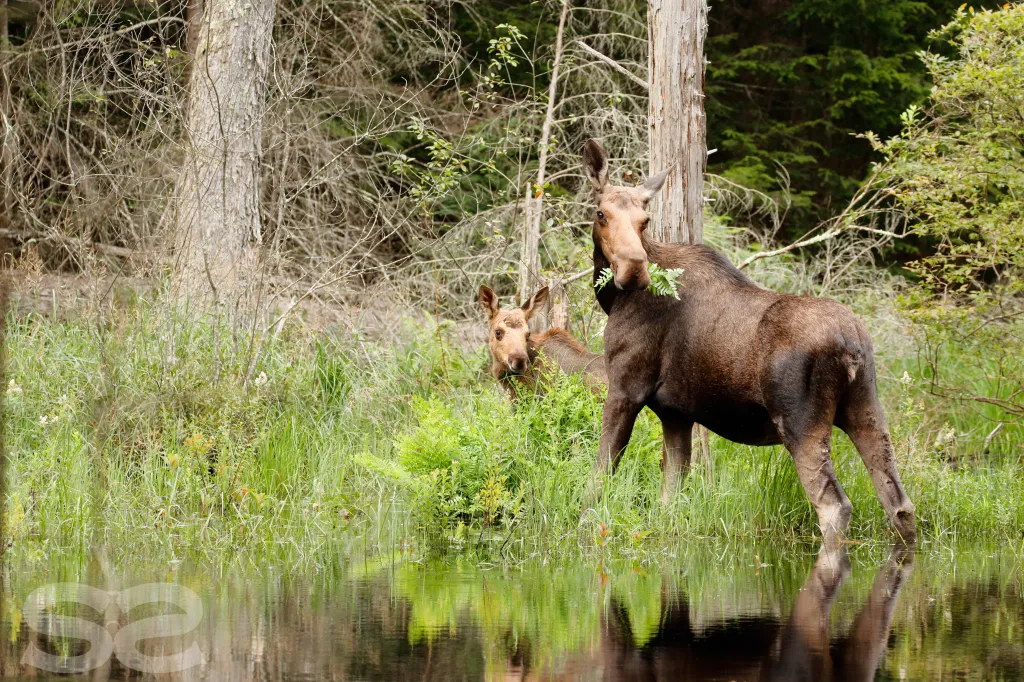
In about 30 acres of dense forest in the Litchfield Hills, a team of foresters and researchers are pioneering new forest management techniques that they say can be replicated throughout New England to make trees more resilient to stressors like climate change.
Great Mountain Forest, one of the largest conservation easements in New England, is helping to preserve several of its young forest stands through pioneering a new forest management technique called pre-commercial trimming. Forest stands are areas of dense canopy growth where young trees compete for water, sunlight and nutrients, according to Kate Regan-Loomis, a natural resource manager with Great Mountain Forest.
The easement encompasses more than 6,000 acres of contiguous forestland in the towns of Norfolk and Canaan. The forest is owned and managed by a nonprofit and is one of the state’s most active research forests on everything from the impacts of climate change to studying sustainable forestry.
“We’re very excited about the results so far,” said Regan-Loomis. “We have in New England very similarly aged forests. So as foresters, we’re concerned about how we regenerate forests and have a diversity of age classes and species to make them more resilient. Normally with a forest thinning, you find the best trees you want to grow and support and then cut trees competing with that tree closely around it. But what we did was instead of cutting the trees only closely around the trees we want to grow, we cut all the trees around those trees.”
Pre-commercial thinning is a method that removes competing trees in dense, young forest stands. In three 20-year-old forest stands, GMF foresters have been practicing this technique, retaining trees more resilient to climate change and disease, while also selecting the most diverse trees possible. Trees that are selected for preservation are called “crop trees.” Regan-Loomis said that the method is called “pre-commercial” because the trees removed are too young to be sold or used for commercial products.
Regan-Loomis said that the nonprofit’s forester emeritus, Jody Bronson, led the project. The goal is that reducing competition for sunlight, nutrients and water, pre-commercial thinning “promotes vigorous growth of desirable species, creating conditions where wildlife and diverse plant communities can thrive, and encourages lush herbaceous growth and tree seedlings thus fostering a healthier, more resilient ecosystem.” Regan-Loomis said that so far they have seen positive signs of forest regeneration.
“What we saw is not only success in the canopy, but an interesting response on the forest floor,” Regan-Loomis said. “With more significant cutting, it resulted in more light on the forest floor. So we saw more regeneration and suddenly there was this new cohort in the forest understory, whereas before it was so barren. With this method you might have fewer trees in the canopy, but they are more resilient and stronger. And if something like an ice storm knocks out those crop trees, we have this new cohort waiting in the wings and ready to take off.”
Presently, the stands are almost entirely beech and black birch, she said. Trimming aims to make the forest stands as diverse as possible. Tulip poplar, white, yellow and grey birch, ash, cottonwood, and oak tress are all slated to be preserved, ensuring a diverse forest that can be more resilient to disease, climate change and pests.
The forest, which is maintained by several volunteers, is slowly becoming more climate change adaptable, Regan-Loomis said. As part of sustainable forestry, volunteers also plant trees with the most potential for “carbon capture.” Great Mountain Forest participates in a carbon offset credit program as part of mitigating the effects of climate change.
“As New England faces intensifying climate pressures, resilient and diverse forests are more important than ever,” said Mike Zarfos, executive director for Great Mountain Forest. “This kind of pre-commercial thinning builds diverse, adaptive ecosystems capable of withstanding unpredictable climate disruptions.”
It is estimated that forests cover approximately 60% of Connecticut, according to the state’s Council on Environmental Quality. A significant portion of Connecticut’s forests are privately owned, with about 73% of the forested land owned by individuals, families, land trusts, tribal owners, clubs and corporate owners. In addition, the state has 33 state forests totaling about 175,000 acres.
Connecticut, like most other New England states, is largely forested, but only about one-tenth of 1% of all forest land in the state is considered true old-growth forest. Most of the forests in the state are considered second-growth, meaning they were clear-cut for industrial use at one time. Most of Connecticut was clear cut by the early 20th century for the once-booming logging industry. Importantly, a forest does not have to be ancient to be considered old growth, as different tree species have vastly different life spans.
Regan-Loomis said the work has been made possible through a sustainability grant the Connecticut Land Conservation Council.
“We are so appreciative of their help and this work wouldn’t be possible without this grant,” Regan-Loomis said. “The work the CLCC does with so many land trusts is amazing. We’re excited that other land trusts can see our work and replicate these methods to create more diverse and sustainable forests.”
For decades, the Great Mountain Forest has been used in forestry education and research. In 1941, the Yale School of Forestry began using the forest for field training its students. Today, the Yale Camp at Great Mountain Forest teaches hands-on sustainable forestry each year to Yale undergrads.
In addition, the Great Mountain Forest has a summer internship program, providing college students with experience in sustainable forest management. The forest also holds an annual Woodland Academy, providing education for landowners interested in managing their own land.
Stephen Underwood can be reached at sunderwood@courant.com.



